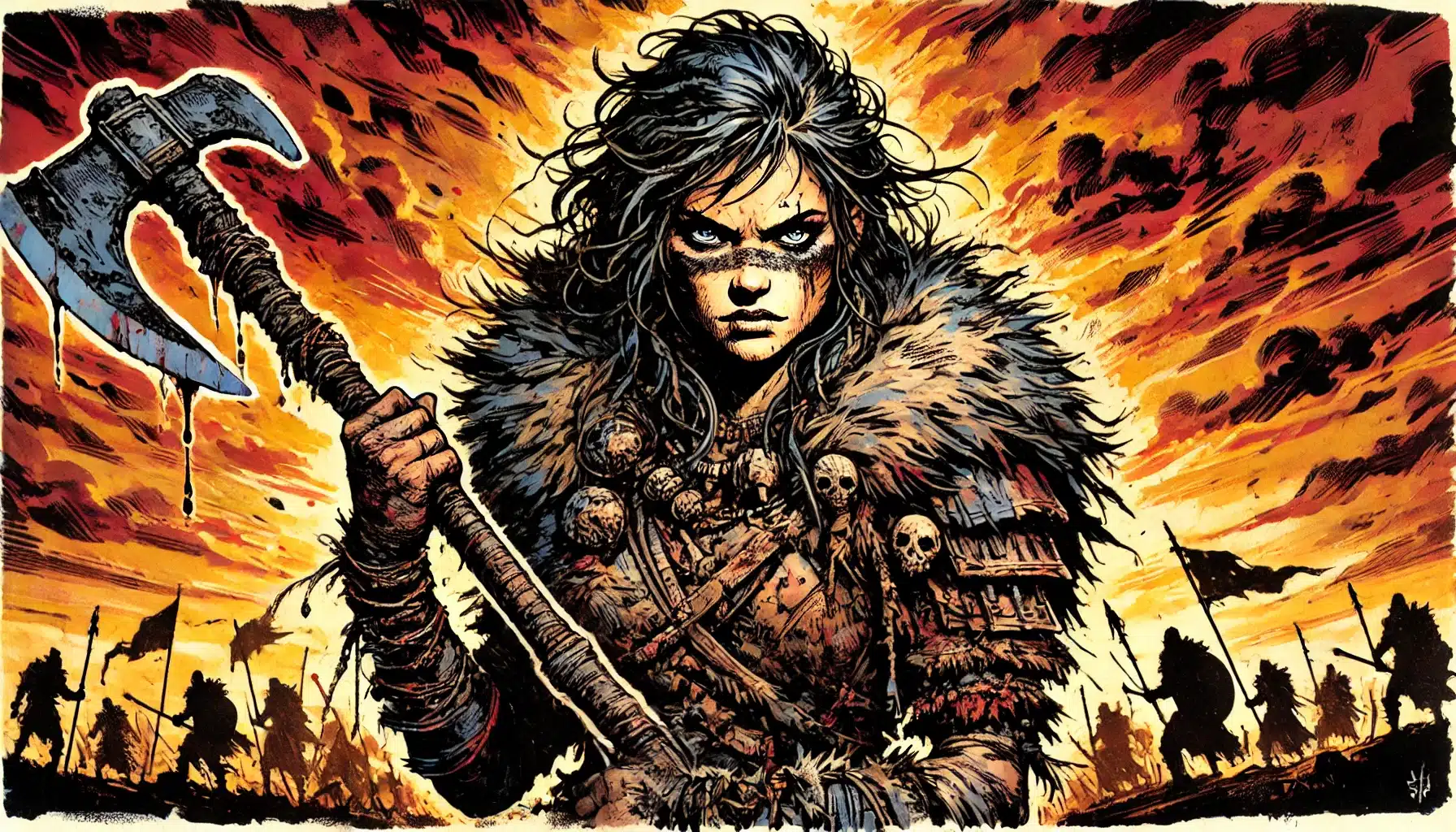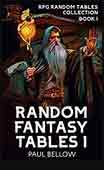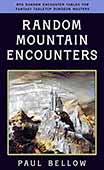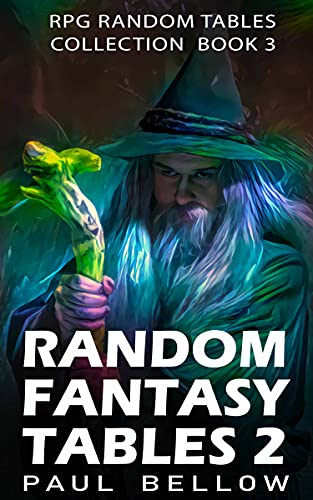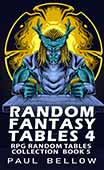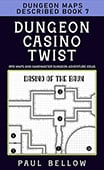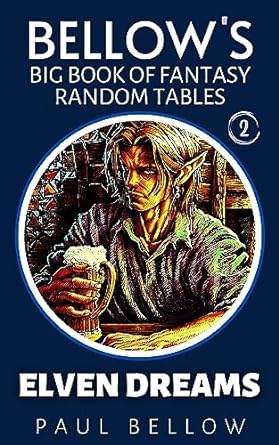When the thunderous roar of combat echoes through the dungeon halls, few classes blaze a trail of utter devastation quite like the barbarian. Theirs is the art of unrestrained force—a relentless storm of muscle, fury, and unbreakable grit that strikes fear into the hearts of goblins, dragons, and tyrants alike. In Dungeons & Dragons 5th Edition, barbarians are more than mere brutes: they are combat alchemists, transforming anger and instinct into tactical advantage through the iconic mechanics of Rage and brute resilience.
Within the chaos of battle, barbarians stride at the vanguard, shrugging off blows that would fell lesser heroes. Their unique combination of high hit points, superior saving throws, and the magic-dampening haze of primal adrenaline make them the ultimate shock troops. The battlefield is their proving ground; every swing of their greataxe becomes a declaration of supremacy. Yet even the most savage warrior can find themselves outmaneuvered if they lack cunning—a reckless charge can quickly turn to disaster against disciplined foes or cunning spellcasters.
This guide is your forged-iron D&D barbarian toolkit: each section hammers home practical and advanced tactics to help you crush your enemies and protect your allies. Whether you’re just picking up your first greataxe or steering your battle-scarred veteran through desperate, high-level gauntlets, understanding the barbarian’s unique abilities is the difference between a heroic last stand and a legendary victory.
But don’t mistake straightforward mechanics for simplicity. The barbarian’s toolkit is deceptive in its elegance. Mastering the ebb and flow between risk and reward, maximizing effective Rage usage, and wielding subclass features with deadly precision—all these mark the difference between a merely strong barbarian and an unstoppable force.
Throughout, we’ll illuminate not only when to wield overwhelming force, but how to position, partner, and plan—guiding you to not only survive the carnage, but to seize control of it. Let’s unleash the beast with brains and show the world that tactical thinking and primal power make for the deadliest combination in D&D 5e.
Understanding the Barbarian’s Core Combat Features
At a glance, the barbarian seems a study in straightforward aggression. Upon closer inspection, however, the class reveals a nuanced weave of strengths and vulnerabilities, each demanding a tactical handshake between instinct and intention. To navigate combat with confidence, you must command four essential features: Rage, Unarmored Defense, Reckless Attack, and Danger Sense. Each one alters your priorities and unlocks layers of subtlety in every showdown.
Try my AI Tabletop RPG generators...and an extensive library of content!
- Rage is the beating heart of the barbarian. Activating this primal state turns your body into living weaponry—doubling down on raw durability, fearsome offense, and immunity to minor distractions. Careless use, however, can leave you exhausted and exposed when a crucial encounter arises. The wise barbarian knows not only how, but when, to unleash their fury.
- Unarmored Defense frees the barbarian from the traditional trade-off between mobility and protection. With armorless agility, the barbarian bounds across the battlefield, calculating positions and opportunities mere metal-clad warriors can only dream of. Each movement becomes a threat—every space, a potential snare for unwary foes.
- Reckless Attack transforms every swing into a gamble: the promise of raw advantage in exchange for heightened vulnerability. Do you press the attack and expose your flank, or do you bide your time, waiting for the perfect opening? This push-and-pull forms the fulcrum of risk management for every barbarian, shaping their role as both aggressor and guardian.
- Danger Sense is the primal intuition that makes a barbarian so much more than a bull in a china shop. It sharpens their reflexes, letting them bob and weave through magical traps and area effects that might reduce others to ashes. It’s this vital edge, often overlooked, that lets the barbarian lead the charge into the unknown, defying fate and magic with equal aplomb.
⚔️ Fantasy RPG Random Tables Books
Make life as a Gamemaster easier…
If you play Dungeons & Dragons, Pathfinder, or other fantasy RPGs, this
RPG random tables series
is packed with encounters, NPCs, treasure, and more. Available in eBook or print—either way, you’ll have a wealth of adventure ideas at your fingertips.
Yet, these core mechanics are only the foundation—a canvas upon which each subclass paints a different masterpiece of brutality. From the relentless Totem Warrior ideal, fusing spiritual resilience with physical might, to the Zealot’s divinely driven fury, each Primal Path recasts the basic barbarian in new and surprising ways.
Subclass diversity in D&D 5e is not a matter of flavor alone—it’s a tactical engine. Every Primal Path gains unique tools that shape not just how you fight, but why. The Totem Warrior’s Bear provides unmatched bulk and crowd control; the Wolf turns allies into predators; the Eagle unlocks unheralded mobility and vision. Then there’s the Zealot, who fights on even past the brink of death, dishing out divine retribution while refusing to drop. Each subclass carves new roles in the party: tank, striker, controller, or even support.
Ultimately, to master the barbarian is to embrace this interplay between fundamentals and flourishes. Know what every feature offers, and you will never be caught flat-footed. Let’s take this battle wisdom and put it into action, beginning with the most iconic mechanic—the mighty Rage.
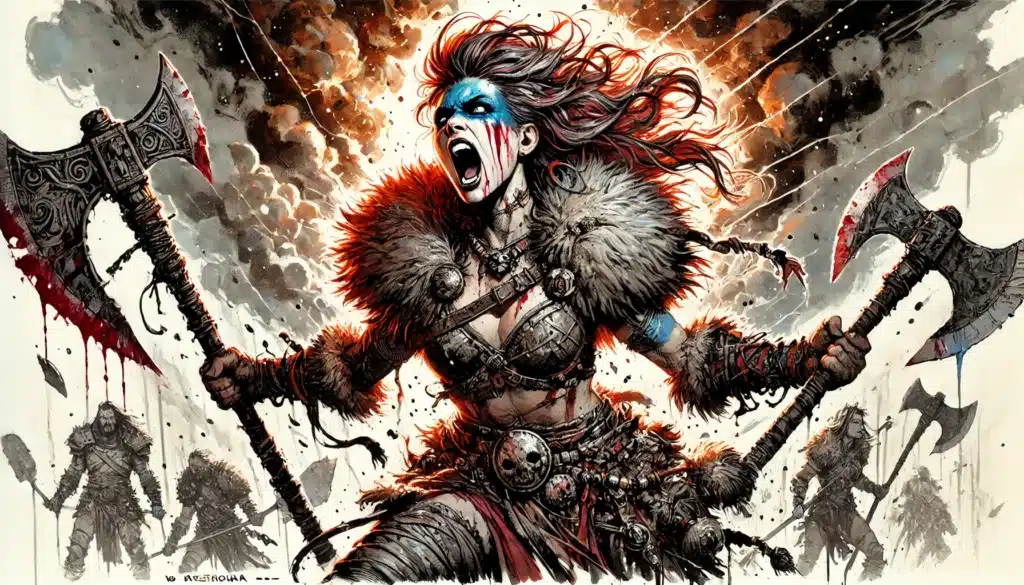
Rage: The Foundation of Barbarian Strategy
Rage is not a simple “on/off” switch; it’s a living resource—fierce, but finite. Each use transforms the barbarian from hardy hero to avatar of unadulterated destruction, granting bonus damage, resistance to physical harm, and advantage on specific saves. The timing of your Rage is as critical as the act itself; trigger it too early, and you’ll waste its duration before the real action begins. Wait too long, and you risk a devastating ambush or spell.
The choice to Rage shapes every turn of your combat rhythm. Ideally, you activate Rage at the very first whiff of real danger—when you’re sure the upcoming fight isn’t a skirmish, but a true threat. Entering Rage is a bonus action, and many subclass features hinge on its activation, which brings ever more interesting decision points as you level up.
But Rage is fleeting. Lasting only a minute, and ending early if you don’t attack or take damage, maintaining it requires foresight. Sometimes, exploration turns tense, with danger lurking but not quite striking. Do you preemptively enter Rage or risk walking unprepared into the jaws of death? Crafty barbarians develop an instinct—reading DM cues, using minor attacks to “ping” their Rage, or even deliberately taking a little damage to keep their fury burning.
Conserving your Rage uses is vital in long, attrition-heavy adventures. Raging in every minor skirmish leaves you exposed in boss fights or crucial encounters. Instead, imagine Rage as a drawn bow: keep it taut and ready, but loose the arrow only when the target is worthy. This means sometimes forcing discipline over impulse—resisting the urge to go full throttle until it truly counts.
Finally, synergy with other bonus actions is key. Raging when you can also trigger a subclass feature (like a Zealot’s Divine Fury or Bear Totem’s Spirit Shield) multiplies your impact. The skilled barbarian never wastes a turn—they set every bonus action ablaze with purpose.
10+ Tips for Managing Rage Effectively:
- Save your Rage for encounters with real stakes—boss monsters, large groups, or deadly traps.
- Always Rage as a bonus action after you know combat is about to erupt (but before you attack).
- Use thrown weapons or improvised attacks on low-threat turns to keep your Rage active.
- Don’t be afraid to deliberately place yourself where you’ll take minor damage (hazards, AoE) to sustain Rage between waves.
- If unsure, communicate with your DM for cues on imminent danger or potential battle escalation.
- Pair Rage activation with high-impact bonus actions from your subclass or Feats.
- If you’re close to defeating the last enemy, hold off on Raging unless absolutely necessary.
- In dungeons or gauntlets, track your remaining Rages and rest cycles carefully to avoid running dry at critical moments.
- Time Rage activation to coincide with party buffs (e.g., right before Haste or Bless lands).
- Remember, Rage ends if you’re not attacking or not taking damage—plan your positioning to stay in the thick of it.
- Consider using opportunity attacks to help maintain Rage through multiple turns of scattered combat.
- If you expect multiple encounters soon, conserve a Rage by finishing off one fight with regular attacks.
- Using a ranged weapon (javelin, handaxe) at a retreating foe can keep Rage alive on a down-tempo turn.
By mastering the timing and flow of Rage, you transform from a mere battering ram into the true engine of the party’s momentum. Anticipate the battlefield, read your enemies and allies alike, and let every surge of primal fury become the spark that turns an ordinary round into a legendary one.
In summary, Rage is the sun at the barbarian’s solar system—revolving your tactics around it brings both clarity and strength. Manage it wisely, and you won’t just survive the tide of battle; you’ll ride it like a force of nature.
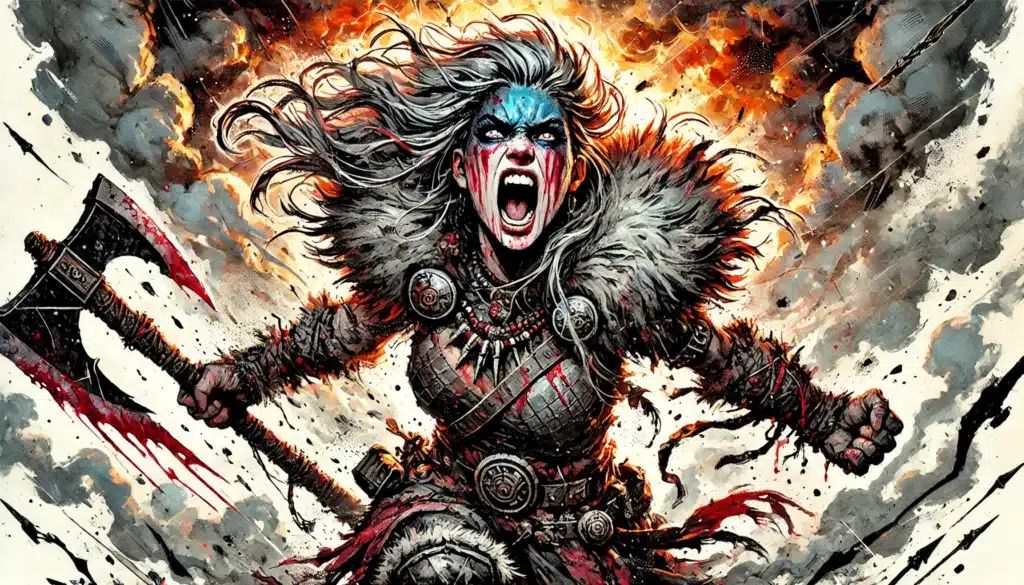
Reckless Attack and Risk Management
Every time you wield Reckless Attack, a hush falls over the table—will you crush your enemies with advantage, or fall prey to the sharp retort of their blades? Reckless Attack lets you attack with advantage, but in exchange, all attacks against you until your next turn also gain advantage. Like an enraged bull charging a matador, there’s danger—but also an irresistible promise of impact.
⚔️ Fantasy RPG Random Tables Books
Make life as a Gamemaster easier…
If you play Dungeons & Dragons, Pathfinder, or other fantasy RPGs, this
RPG random tables series
is packed with encounters, NPCs, treasure, and more. Available in eBook or print—either way, you’ll have a wealth of adventure ideas at your fingertips.
The optimal use of Reckless Attack is determined by battlefield context. Against hordes of weaker enemies, it lets you carve through them with frightening speed, especially when you need to guarantee a killing blow or capitalize on a party-wide debuff. Against singular foes or boss monsters, it’s a powerful trigger for class and subclass features that key off critical hits or dealing consistent damage.
Still, the price is real. Gaining advantage for your swings means giving advantage to those who lurk with daggers poised, or archers waiting for an opening. You must assess enemy capabilities: Will they attack you? Are they likely to target your exposed flank? Are their attacks magical or poison-laced? Sometimes, holding back on Reckless is the better tactic, especially in the opening rounds when the party’s formation is still solid.
Reckless Attack also shines brightest in synergy with certain buffs. If an ally is granting you temporary hit points, resistance, or even a Sanctuary spell, the risks diminish and reward climbs higher. On the flip side, if you’re already wounded or outnumbered, caution is the name of the game. The art is in choosing your moments: burst offense, then pull back, reposition, and let the rest of the party cover your vulnerabilities.
In some cases, you can even use Reckless Attack as psychological warfare. By making yourself the obvious target—a tantalizing frag grenade—you set up your party for devastating counterattacks, drawing heat off the wizard or rogue and soaking damage you’re built to endure.
Table: When to Use Reckless Attack
| Scenario | Good/Bad Choice? | Reasoning/Notes |
|---|---|---|
| Facing weak minions, surrounded | Good | Your tankiness + resistance minimizes risk. |
| 1v1 with high-AC boss, rest of party safe | Good | Maximizes offense, pays off big on crits. |
| Already heavily wounded, multiple enemies | Bad | Increases chance of being dropped quickly. |
| Surrounded by archers/ranged attackers | Bad | Guaranteed advantage on many incoming attacks. |
| Allies buffered with temporary HP nearby | Good | Incoming advantage less dangerous, more damage. |
| Facing enemy known for high crits/toxicity | Bad | Doubling enemy chance for crits/debuffs. |
| Using party buffs to mitigate defense loss | Good | Bardic Inspiration, Shield spell reduces risk. |
| Low-priority minions + spellcaster threat | Good/Bad | Weigh upside of fast kill versus risk exposure. |
Used with discipline, Reckless Attack becomes more than brute force—it’s your lever to shape enemy behavior. Make yourself the threat, and foes will often waste actions attacking your rugged hide instead of your fragile allies.
In short, Reckless Attack is a siren’s call—both opportunity and danger lie within. Use it not just to deal more damage, but to steer the enemy’s aggression, soak up punishment when you’re prepared, and set up your party for coherent, coordinated assaults.
Positioning and Movement on the Battlefield
In every fight, a barbarian’s place is on the bleeding edge, not just at the front of the line but exactly where their presence unbalances the enemy formation. Thanks to increased movement speed and Unarmored Defense, you aren’t tethered to one spot—you can become a living barricade, a scalpel for isolating threats, or a steel wall blocking enemy advances.
Good positioning leverages more than just your hit points; it’s a dance of opportunity attacks, denying the enemy safe passage, and creating choke points that funnel them into your waiting fists. Use your speed to chase down enemy casters, intercept archers, or cut off fleeing bosses before they can regroup.
Flanking, when allowed by your DM, significantly increases your offensive pressure. Even in games without formal flanking rules, simply threatening multiple targets at once forces the opposition to divide their attention, often giving your party the upper hand on multiple fronts.
Perhaps most critically, you are the party’s first responder—engaging priority targets before they can wreak havoc. Whether it’s rushing an enemy priest before a spell is cast or body-blocking a charging ogre, your role is both dynamic and disruptive.
14+ Strategies for Effective Battlefield Positioning:
- Rush to block doorways or narrow corridors, forcing enemies to fight on your terms.
- Intercept ranged attackers; use your speed to lock down archers or slingers.
- Position yourself between enemy melee and fragile allies—a living shield.
- Circle around to isolate key casters from their front lines.
- Use obstacles to funnel multiple enemies into your reach for opportunity attacks.
- Leap (if possible) over hazards to take aggressive positions enemies can’t reach.
- Hold critical chokepoints (bridges, staircases) to delay or split enemy forces.
- Use your presence to herd fleeing enemies back toward party kill zones.
- Exploit environments—push foes into firepits or off ledges where possible.
- Advance with ranged allies at your back, forcing melee enemies to go through you first.
- Threaten multiple targets to complicate enemy tactical decision-making.
- Flank to grant party members advantage, especially for sneak attack or smite setups.
- Take the high ground when available for better lines of sight and reach.
- Interject yourself between bosses and their bodyguards to separate threats.
The barbarian is far more than a damage soak— they are the sentinel, the spearpoint, the mobile engine of disruption. Agile positioning makes your allies deadlier, your enemies hesitant, and your own survival (and glory) all the more assured.
Remember: the well-placed barbarian is a nightmare for enemy tacticians—a primal force that dictates the pace and flow of battle. When you move with intent, every step is a threat, every square a stake in your party’s victory.
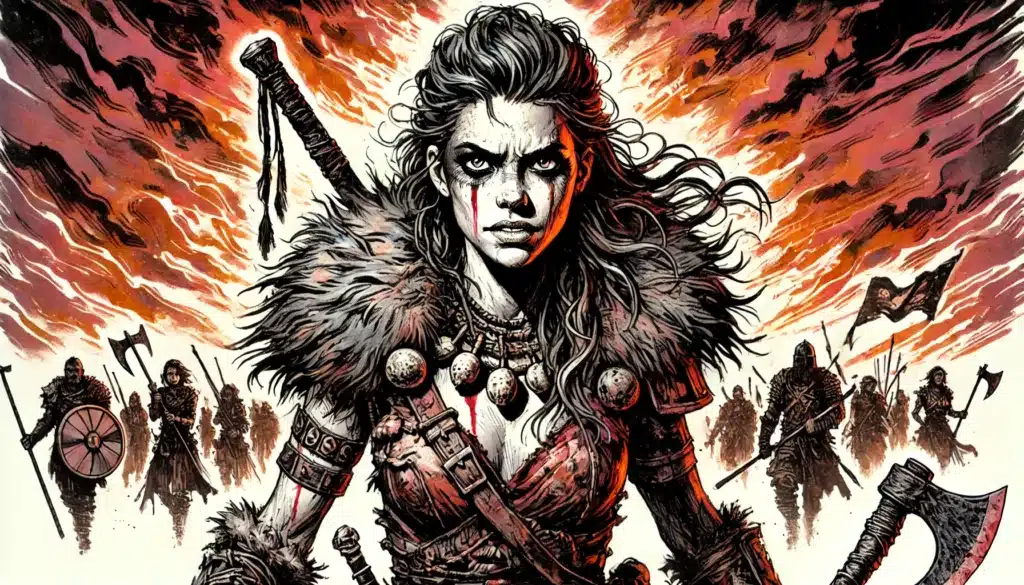
Subclass-Specific Combat Styles
Every Primal Path is a fresh lens—a new rhythm to how you approach the chaos of combat. Different subclasses slot unique tools into the barbarian’s core kit, transforming you from brute to alchemist of violence, from storm-front tank to spiritual juggernaut.
Some paths broaden your durability, like the Bear Totem’s physical resistances, turning you into an immovable wall. Others, like the Zealot, stoke your offense to godlike heights, layering radiant or necrotic fury on every swing. Each subclass not only changes the party’s expectations of your role but also alters your own strategic toolkit—buffs take on fresh meanings, certain risks become more or less appealing, and your party’s composition shifts around your evolving strengths.
Like choosing an animal mask at a tribal rite, your Path defines your mythos. Are you the silent defender, the avenging angel, or the storm set loose among your foes? Let’s dive into how subclass features warp your playstyle—and help you dominate the field.
Try my AI Tabletop RPG generators...and an extensive library of content!
Path of the Totem Warrior
Steeped in the primal, the Totem Warrior is the tactician’s barbarian—a leader by instinct, shifting form and focus with each new animal spirit chosen. At every milestone, your selected totem shapes not only how you fight, but the very flow of the battlefield around you.
The Bear, for example, turns you into a nigh-unstoppable juggernaut, halving almost every incoming damage type (save psychic). You become the anchor—enemy blows break against you like surf on a cliff. The Wolf, in contrast, is the alpha predator—granting your allies advantage on attacks against creatures within your reach. You become a force multiplier: the pack leader orchestrating the takedown. Then there’s the Eagle, which transforms you into the ultimate skirmisher, slicing through enemy lines with blinding speed and escaping to reposition before counterattack.
Each totem brings a suite of benefits—not just during Rage, but through features like ritual spells or movement upgrades. The true genius of the Totem Warrior lies in always having the right tool for the right moment, adapting to party and enemy composition with a natural ease.
To play a Totem Warrior well is to study both your party’s strengths and your enemy’s tells. Be ready to switch from vanguard to support, from ablation shield to hammer, in the space of a heartbeat. The battlefield is your hunting ground, and you are both predator and protector, balancing fury with wisdom.
10+ Tactics for Totem-Based Combat Styles:
- Bear: Tank AoE spells or enemy bosses frontline to protect the party from devastating alpha strikes.
- Bear: Draw aggro by placing yourself centrally among the enemy, leveraging universal resistances.
- Wolf: Coordinate attacks with rogues or paladins to maximize advantage bonuses.
- Wolf: Flank high-value targets to enable backstab or divine smite from allies.
- Eagle: Use your Dash as bonus action to escape grapples or disengage without triggering opportunity attacks.
- Eagle: Harass enemy archers and casters by closing the gap then retreating before counterattacks.
- Bear: Take damage on purpose to maintain Rage and exploit high resistances.
- Wolf: Act as battlefield controller—herding enemies toward the party’s kill zone.
- Eagle: Reconnoiter enemy positions quickly, relaying weaknesses or threats to strategize next moves.
- Bear/Wolf: Use ritual spells (from totem rituals) to gain vital intel between battles.
- Eagle: Combine with Jump or similar spells for extreme vertical/terrain advantages.
- Wolf: Block escape paths for enemies trying to flee, making you the ultimate hunter.
With Totem, your role flexes fluidly between solo beast and pack alpha. You’re never a one-note defender—instead, your choices ripple through the party, amplifying strengths and shoring up weaknesses. The best Totem Warriors are those whose animal wisdom shapes every round.
A carefully chosen and well-used Totem can mean the difference between a close call and a resounding victory, not just for you, but for the entire adventuring party.
Path of the Zealot
If the Totem Warrior is the tactician, the Zealot is the zealot—the unstoppable holy fury, fueled by a divine mandate to rise and strike even in the jaws of death. Divine Fury adds radiant or necrotic power to every first hit on your turn, and their path features keep them swinging even when the odds demand surrender.
At low levels, Zealot shines thanks to Divine Fury—every turn begins with a burst of bonus damage that ignores resistances many enemies rely upon. If dropped, the Zealot can be revived with healing magic unavailable to other barbarians. As you climb in level, your relentless rage keeps you fighting through defeat after defeat, laughing off the enemy’s belief that you’re finally down for the count.
⚔️ Fantasy RPG Random Tables Books
Make life as a Gamemaster easier…
If you play Dungeons & Dragons, Pathfinder, or other fantasy RPGs, this
RPG random tables series
is packed with encounters, NPCs, treasure, and more. Available in eBook or print—either way, you’ll have a wealth of adventure ideas at your fingertips.
As your levels rise, Zealot resilience becomes legendary. In extended slugfests where other warriors fall exhausted or dead, you keep standing—swinging, reviving, staring grim adversaries in the eyes. The longer the battle, the more intense your aura becomes. With each round, the party gets more value from your indomitable offense and refusal to fall.
The Zealot excels at breaking enemy lines and anchoring high-morale moments: when your presence signals hope to desperate allies and terror to even the most unholy bosses.
Table: Zealot Features and Their Impact
| Level/Feature | Combat Impact | Notes on Play/Application |
|---|---|---|
| 3: Divine Fury | Damage Output | Reliable, mix of physical + radiant dmg. |
| 3: Warrior of the Gods | Survivability | Cheaper/reliable resurrection (no costly components). |
| 6: Fanatical Focus | Survivability | Reroll failed save—clutch on dangerous spells/abilities. |
| 10: Zealous Presence | Action Economy | Bonus action: partywide advantage for 1 round, huge on alpha strikes. |
| 14: Rage Beyond Death | Survivability | Can stay standing at 0 HP when raging—nearly impossible to drop. |
| 17: Unyielding Zeal | Damage Output | Stronger post-crit damage turns. |
| 20: Increased Rage Uses | Action Economy | Longer endure in protracted fights. |
| Core: Rage Synergy | Damage/Survivability | Always rage for all major features. |
| Core: Melee-Centric Build | Damage Output | Encourages melee, not range for best effect. |
What team works best with a Zealot? Frontline offense and resilience mean you’re a linchpin against undead, fiends, and resistant foes. Surrounded by support casters and a secondary tank, you become the hammer at the party’s heart—unbreakable, unrelenting, and capable of rising whenever the cause demands.
Zealot barbarians are ideal for slogging through gauntlets, holding the line in desperate stands, and providing an anchor for morale. When the eldritch horror’s acid spits and the necromancer’s minions threaten to overwhelm, it’s the Zealot who surges forward, blades blazing with the fury of a righteous storm.
Path of the Berserker
The Berserker is pure chaos—unfiltered battle-lust, risking everything for each frenzied flourish. Activate Frenzy while Raging, and you hurl yourself into the maelstrom: an extra attack as a bonus action, every turn. The cost is steep, though—each Frenzy ends with a stack of Exhaustion, and there’s nothing quite so deadly as a worn-down barbarian if the fight drags on.
The key to Berserker success is context. Against bosses or critical foes, unleashing Frenzy offers a concentrated burst of pain that can shatter the enemy’s morale and HP pool. But in protracted adventures or long slogs, Exhaustion kills momentum. One level is manageable— two or more sap movement, defenses, and damage output, forcing unwanted rest periods. Pace yourself; know when the situation truly calls for all-in offense.
Some adventures—like arena fights, high-stakes assaults, or desperate last stands—reward this high-risk aggression. In sprawling dungeons or campaign play, plan for rest cycles, mitigate Exhaustion with magic (Greater Restoration), and never let your wild offense become a liability in the next battle.
Berserkers court danger with every swing, but the payoff is felt across the party. When it’s time to decapitate the hydra or break the lich’s line, nothing screams do or die quite like a full-on Frenzy.
Embrace Frenzy not just as a mechanic, but as a story—the wild abandon, the cost paid in blood and sweat. Whether channeling tragic legends or ancient myths, Berserker roleplay thrives on that razor’s edge between victory and self-destruction.
Let your exhaustion become part of the narrative—a badge of sacrifice and proof that no one outpaces your raging, tireless heart.
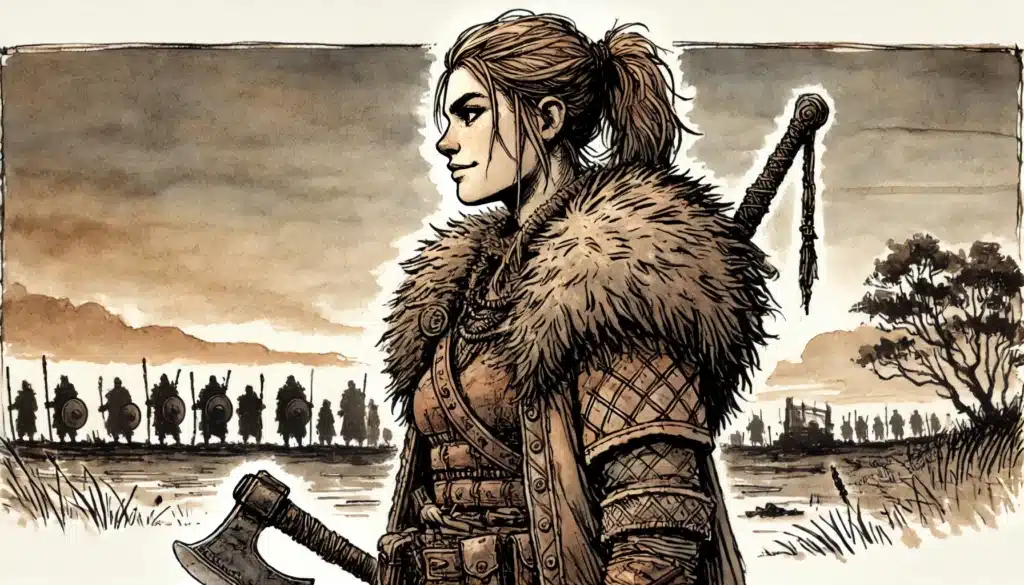
Team Tactics and Party Synergy
The solitary barbarian is a force to be reckoned with; the barbarian in harmony with their party is a battlefield revolution. Learning to meld your strengths with those of your companions lets you punch above your weight—and lets the party plan daring, audacious moves that wouldn’t be possible otherwise.
Barbarians provide the shock and awe, but spellcasters bring utility, rogues deal precision damage, and healers pull everyone back from the brink. Every party benefits from a frontliner who can absorb blows, control enemy flow, and—when necessary—draw all eyes and blades their way. But just as often, the barbarian needs buff spells, healing, and follow-up attacks to truly shine.
Look for tactical rotation: you soak damage in one round, while the cleric drops a blessing, the wizard sets up a battlefield hazard, or the rogue darts for a killing strike. In moments where teamwork becomes art, the barbarian is both the wedge that splits enemy lines and the shield that protects the fragile core. Communicate, coordinate, and always keep your allies in mind—together, victory becomes not just likely, but legendary.
Tanking and Damage Soaking Tactics
The barbarian’s most lauded trait is endurance—the ability to eat blows that would spell certain doom for wizards, bards, or archers. With high hit points, resistances, and tactical features, you’re the rock on which your party stands in the storm.
Good tanking isn’t just about standing in front; it’s about making yourself the irresistible target, intercepting ambushes, and baiting AoE spells or breath weapons when you know you can take it. Use your placement, taunts, and sheer threat to corral enemies into positions where your allies remain untouched, able to cast, shoot, or maneuver at will. A well-timed absorb can save the party’s resources and momentum, especially in protracted battles or boss encounters.
Savvy barbarians learn to body-block: occupying the space between your allies and danger, diving in front of vulnerable spellcasters, or taking hits for wounded teammates. Even outside pure combat, the barbarian can be first into the darkness, triggering traps or ambushes intended for less durable companions. When the party faces a dragon’s breath or a swarming horde, you are the wall that must not fall.
Yet, tanking is also adaptive—different terrains and enemies demand different approaches. On a narrow bridge, you’re the linchpin. In open fields, you herd enemies toward your own kill zone. Against intelligent bosses, you play the part of decoy, sometimes feinting retreat to lure foes into the wizard’s fireball or the rogue’s ambush.
13+ Defensive Strategies for Effective Tanking:
- Announce intent to block or body-check enemies when they attempt to move through your space.
- Use Reckless Attack to draw attention, then rely on high hp and resistances to outlast retaliation.
- Stand directly between melee threats and low-AC party members, denying enemy charges.
- Hold tight in narrow corridors to prevent flanking or multiple attackers reaching the back line.
- Deliberately trigger traps or magical runes to absorb effects the party can’t avoid.
- Use rage-fueled resistances to soak AoE spells and breath weapons.
- Mark or taunt intelligent enemies into targeting you (with DM’s allowance).
- Encourage casters to cast buffs like Warding Bond, Shield of Faith, or Sanctuary on you.
- Retreat strategically (using Disengage if needed) to kite enemies away from wounded allies.
- Ready actions to intercept ambushes or sudden reinforcements.
- Intimidate or threaten lesser enemies into hesitating, stalling enemy advances.
- Exploit environmental hazards defensively—stand astride a pit, dare others to cross.
- Use grapple or shove actions to block enemy advance or push attackers away from allies.
Make communication your shield as well: declare your intent clearly (“I step between the ogre and the wizard!”), signal to allies when you’re at risk, and coordinate with the party so everyone knows when you’ve drawn maximum threat.
Tank not only with your body, but with your words—be the anchor, the focus, and the heroic first call when the dice hit the table.
Synergizing with Buffs and Debuffs
The greatest feats in D&D are achieved when classes combine strengths. Barbarians are famously self-sufficient, but the magic touch of a friendly spellcaster can turn you into a meteor on the battlefield. From Haste turning you into a whirlwind of brutality, to Bless bringing reliability to your kill zone, every buff amplifies your already formidable presence.
Conversely, when enemies are debuffed—blinded by Faerie Fire, restrained by Hold Person, or otherwise impaired—the barbarian becomes the executioner. With advantage all but guaranteed, you can afford to go Reckless for a better critical chance, and slice through previously formidable threats.
Don’t hesitate to coordinate your turn order with spellcasters. A delayed attack may let you go next, capitalizing on a fresh debuff or just-landed Haste, tipping the fight’s momentum. Know what spells the party can bring, and plan your charges or shoves to maximize their impact.
⚔️ Fantasy RPG Random Tables Books
Make life as a Gamemaster easier…
If you play Dungeons & Dragons, Pathfinder, or other fantasy RPGs, this
RPG random tables series
is packed with encounters, NPCs, treasure, and more. Available in eBook or print—either way, you’ll have a wealth of adventure ideas at your fingertips.
When debuffs flow freely, every swing feels like a home run. Use the moments of magical chaos to surge forward—unleashing your most devastating combos just as the enemy’s resistance is lowest.
Table: Synergistic Buffs and Debuffs
| Spell Effect | Spellcaster Class | Synergy for Barbarian | How to Capitalize |
|---|---|---|---|
| Haste | Wizard/Sorcerer | Extra attack, +AC, speed | Frenzied multi-attacks, hard-to-hit tank. |
| Bless | Cleric/Paladin | Extra d4 on attacks/saves | Raise offense, counter low rolls on crucial hits. |
| Shield of Faith | Cleric | +2 AC | Shrug off more attacks when Reckless. |
| Healing Word | Cleric/Bard | Emergency heal while raging | Get back in fight without dropping Rage. |
| Faerie Fire | Druid/Bard | Advantage on attacks | Layer with Reckless for crit fishing. |
| Hold Person | Cleric/Wizard | Paralyzed targets | Guaranteed crits on downed foes. |
| Bane | Cleric/Sorcerer | Enemy attacks penalized | Safer to go Reckless, less risk. |
| Sanctuary | Cleric | Enemy must save to attack | Combine with Reckless for maximum baiting. |
| Greater Invisibility | Wizard | Cannot be targeted | Set up surprise charges or minimize threat. |
| Barkskin | Druid | AC minimum 16 | Makes Unarmored Defense less vital in bad stat builds. |
The upshot? Never treat yourself as a lone wolf (unless you are the Totem Wolf!). Every round, ask: How can I turn this buff or debuff into a greater victory? Your cooperation multiplies the party’s devastation exponentially.
Attack in harmony—when buffed, when debuffed on the enemy, when momentum is screaming “now!”—and you’ll rule the arena with both muscle and wisdom.
Advanced Combat Scenarios
The deeper the campaign, the nastier the obstacles. High-level barbarians face not just stronger monsters, but layered challenges: lair actions, enemy spellcasters, overwhelming numbers, and traps that punish predictability.
In these advanced battles, basic offense is rarely enough. Now comes the era of battlefield control—drawing aggro as a living trap, steering foes into hazards, or disrupting enemy synergies before they hatch. Your role expands even as the risks grow steeper.
Elite monsters and large-scale fights are where a tactically minded barbarian shines brightest. Here, victory depends on controlling not just who you hit or where you stand, but how the entire field flows around your primal presence.
Controlling the Flow of Combat
Barbarians are chaos given form. With threat presence, mobility, and raw intimidation, you become a living chess piece, forcing enemies to respond to your moves instead of calmly executing their plans. By charging into the heart of enemy formations or standing astride key terrain, you dictate not only your fate, but the entire party’s destiny.
Opportunity attacks, as well as tactical use of grapples and shoves, let you steer enemies toward your party’s kill zone. Presence alone often forces enemy spellcasters or tacticians to reconsider their entire strategy—you are the spiked barricade in the middle of what was once a neat pattern.
Manipulate attacks of opportunity to punish movement, or simply use your physicality to block exits, herd foes into dangerous areas, and interrupt rituals or spells. The more you make the enemy react to you, the less they can focus on their own sinister plans.
Never underestimate the power of intimidation—a well-timed bellow or display of strength can disrupt morale, shatter discipline, and fragment otherwise dangerous enemy organizations.
15+ Battlefield Control Tactics:
- Block chokepoints with your body, denying mass movement.
- Use Grapple to pin down high-mobility threats or leaders.
- Shove enemies into traps, hazards, or spell zones (like a wizard’s Wall of Fire).
- Threaten spellcasters into retreat or forced concentration checks.
- Ignite intimidation: display trophies or roar to cause fear or hesitation.
- Charge the enemy’s rear lines to scatter their support units.
- Draw attention—force the enemy commander to “deal” with you, splitting their focus.
- Bait AoOs by feigning retreat, forcing wasted enemy attacks.
- Pin enemies against terrain—corners, pits, or cliffs—to limit escape.
- Herd minions toward AoE spell zones (e.g., Fireball kill boxes).
- Disarm dangerous enemies with weapon attacks (when rules allow).
- Use readied actions to punish enemy movement patterns.
- Act as decoy: lure elite enemies into ambushes by overextending.
- Stand on or near ritual circles, treasure, or objectives to force conflict on your terms.
- Layer with spellcasters—have them set traps or hazards where you’ll drive enemies.
In this domain, the barbarian transforms from blunt instrument to tactical architect. Muscles can break bones; a sharp mind can break armies.
At high levels, leadership comes naturally—other players look to you as the point of the spear, the fulcrum of their own plans. Embrace the call, and you’ll turn even hopeless odds into stories told for generations.
Dealing with Magic and Ranged Enemies
Magic is the great equalizer—and archers and spellcasters know how to prey on barbarians’ natural weaknesses. Area spells ignore much of your native resistance; status effects like paralysis, banishment, or Hold Person can turn a legend into a sitting duck. Ranged attacks, especially in wide-open terrain, can leave you scrambling to close the distance before you’re peppered with arrows or eldritch blasts.
Try my AI Tabletop RPG generators...and an extensive library of content!
But you’re not helpless. Use cover and terrain to minimize exposure, let allies provide counterspells or magical protection, and look for items (like the Cloak of Resistance) to widen your defensive net. Consider spells like Freedom of Movement or the Magic Resistance trait (via items or racial features) to keep up.
When the open field is a killing ground, force enemies into close quarters, using your fast movement and Dash or Jump options to reach them quickly. Communicate with party spellcasters to prioritize shutting down ranged threats or hampering their mobility.
Ultimately, adaptability is your greatest weapon—change up tactics, don’t always charge headlong, and let your legend grow not just for strength, but for wisdom in facing magic and distance killers.
Table: Common Magical/Ranged Threats and Countermeasures
| Threat | Risk to Barbarian | Recommended Countermeasure |
|---|---|---|
| Hold Person/Paralysis | Total lockdown | Fanatical Focus, Magic Resistance, ally counters |
| Fireball or Lightning Bolt | AoE bypasses resistance | Spread out, use cover, tactical withdrawal |
| Banishment | Removed from field | Counterspell from ally, Fanatical Focus, Magic Resistance |
| Stunning Arrows/Effects | Action denial | Danger Sense, cover, boost saves |
| Swarms of Archers | Focused fire | Close distance fast, cover, AoE threats |
| Slow/Reduce Speed Spells | Kited at range | Freedom of Movement, party buffs |
| Magic Missile | Guaranteed damage | Shield (magic item), party interrupts |
| Ghouls/Undead Paralyzers | Status over damage | Fanatical Focus, take front but with support |
| Lair/Environmental Magic | Forced movement/CC | Spot hazards with Danger Sense, quick repositioning |
| Poison/Acid Arrows | Damage bypasses rage | Resistance potions, target ranged attackers first |
Barbarians that thrive in high-magic campaigns are those who learn every trick to survive: ask for buffs, research magic item options, and plan party strategy around shutting down the threats that can bypass your greatest strengths.
Every encounter with a wizard’s retinue is a new lesson: come back from the edge stronger, wiser, and more unpredictable than any foe imagined.
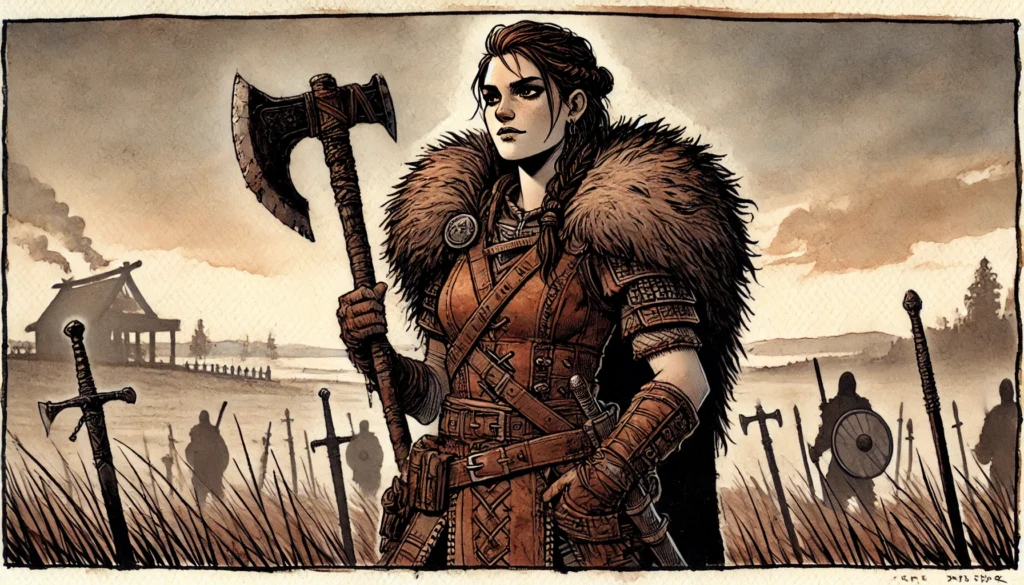
Equipment Choices and Combat Gear
Gear is the smith’s gift to the warrior—a toolkit that lets you sculpt every battle to your design. For the barbarian, equipment is more than mere numbers; it’s a source of style, improvisation, and subtle advantage. The right blade or enchanted trinket unlocks whole new realms of strategy.
Choosing weapons is about more than maximum output; it’s about options. Are you cleaving through hordes, or dueling a dragon? Do you need reach, mobility, or pure devastation? Every choice shapes not just your chances of victory, but the stories told of your legend.
Magic items, too, carry more weight for the barbarian than perhaps any other class. Well-chosen relics amplify your rage, shore up your weak spots, or push your raw might into the realm of the supernatural. Be deliberate—think not only about power, but about synergy with your unique strengths.
Weapons and Combat Styles
The optimal weapon for a barbarian isn’t always the biggest or sharpest. Greataxes are the classic choice for burst damage and critical potential, but greatswords offer consistency, and flexible polearms create threat zones that lock down enemy movement. Sword-and-board (shield + one-handed weapon) opens access to higher AC and defensive feats. Dual-wielding brings relentless pressure in smaller fights or when attacking from unexpected directions.
Adapt your loadout to your campaign. In tight dungeons, shorter weapons and versatility matter; in open fields or large-scale battles, reach and sweeping area attacks shine. Don’t be afraid to switch between tools—even mid-combat—if the DM allows.
Tactical flexibility leans heavily on your fighting style. Are you the lone vanguard, holding a corridor solo? The flanking interceptor, trading blows in a sudden melee? Or the relentless hunter, dual-wielding handaxes as you charge from foe to foe?
⚔️ Fantasy RPG Random Tables Books
Make life as a Gamemaster easier…
If you play Dungeons & Dragons, Pathfinder, or other fantasy RPGs, this
RPG random tables series
is packed with encounters, NPCs, treasure, and more. Available in eBook or print—either way, you’ll have a wealth of adventure ideas at your fingertips.
16+ Weapon-Based Strategies:
- Use a greataxe to maximize critical chance (especially if you often have advantage).
- Take the Great Weapon Master feat for massive damage on heavy hits.
- Switch to greatsword for more reliable average damage, less variance.
- Wield polearms for reach, opportunity attacks, and area denial.
- Combine shield + longsword/warhammer for improved AC and tanking durability.
- Use handaxes or javelins for ranged threats—keep them flying to maintain Rage.
- Carry a backup weapon (club, morningstar) for enemies resistant to slashing.
- Occasionally dual-wield light weapons when facing multiple low-AC minions.
- Use the environment: smash tables, topple braziers, turn furniture into improvised weapons.
- Grapple with one hand while striking with the other, pinning enemies in hazards.
- Alternate between power attacks and precise strikes based on enemy weaknesses.
- Save the biggest weapon for boss fights; use lighter ones for protracted skirmishes.
- Always carry at least one silver, adamantine, or magic weapon for bypassing resistances.
- Practice disarming or tripping maneuvers if your DM uses those options.
- Be ready to throw weapons at fleeing or flying threats.
- Consider a net for immobilizing the occasional monster (if your DM allows).
- Smash defensive cover with your might—break fortifications that stymie weaker friends.
Weapons are more than tools; they’re character statements. Don’t just swing—create stories with every improvised blow or clever switch.
Remember, the environment itself is your ally: hurl barrels, collapse scaffolds, and let the terrain become your accomplice in havoc.
Magic Items for the Barbarian
Not all magic items are created equal—especially for the barbarian, who can’t always benefit from armor or spells. Instead, seek boons that fortify your raw strengths, plug defensive holes, or turn movement and threat into tactical dominance.
Cloaks and amulets that boost resistances, belts that add to Strength, and boots that enhance speed all compound your natural advantages. Rings and weapons that grant additional attacks, critical boosting, or magical damage types keep you relevant even against the most arcane foes.
Just as important are items that let you regain or recharge Rage, remove Exhaustion, or resist status effects. In a high-magic or high-level campaign, items that counter spellcasters and magical surprises are worth their weight in gold.
Don’t let your shopping list be boring—ask for unique or flavorful items that reinforce your primal mystique. The best items are both functional and memorable, becoming as much a part of your legend as that first, fateful greataxe.
Table: Recommended Magic Items for Barbarians
| Item | Effect | Barbarian Benefit |
|---|---|---|
| Belt of Giant Strength | Massive STR boost | Increases attack, damage, athletics. |
| Cloak of Protection | +1 AC and saves | Enhances Unarmored Defense, saves. |
| Amulet of Health | Sets CON to 19 | Supercharges Unarmored Defense and hp. |
| Boots of Speed | Double movement | Chase, escape, and reposition faster. |
| Ring of Free Action | Immune to paralysis/restrain/slows | Shuts down major threats. |
| Ring of Resistance | Resistance to one damage type | Patch resistance gaps in Rage. |
| Weapon, +1/+2/+3 | Bonus to attack/damage, magical | Deals with resistances, improves offense. |
| Maul of the Titans (homebrew/legacy) | Devastating heavy weapon | Showstopper for key fights. |
| Periapt of Wound Closure | Double healing, stable fast | Survive the brink, shake off death. |
| Gauntlets of Ogre Power | Set STR to 19 | Backup for low STR/ability drain. |
| Stone of Good Luck | +1 ability checks and saves | Compound with Danger Sense, etc. |
| Ioun Stone (Agility/Vitality) | Boosts stats or hp | Permanent, stackable buffs. |
Ultimately, the best equipment is always the one that fits your character—both their role and their legend. Choose with both the head and the heart.
A bear-cloaked berserker with a belt forged from leviathan sinew is more than a stats sheet—they’re a hero in the making, ready for tales to be sung around every campfire.
Final Thoughts on Mastering Barbarian Combat
To master the barbarian is to embrace contradiction: to be at once the fury and the fortress, the hammer and the shield, the improviser and the tactician. If you treat your class as little more than a blunt object, you’ll miss out on layers of complexity and creativity waiting beneath every rule and roll.
Growth comes from adaptation. As you face new monsters, diabolical traps, and campaign twists, let your tactics evolve. Listen to the rhythm of your rage and the beat of your party. Don’t be afraid to try new combat styles—experiment with weapons, gear, and positions both on the field and in the narrative. Great barbarians are remembered not just for whom they slew, but for how they rose to every new challenge.
Roleplay is the final, secret weapon of every dominating barbarian. Rage is more than a mechanic; it’s a spark of story, a pulse that should echo in your words as well as your dice rolls. Let every battle thrill with emotion—fear, triumph, vengeance, or wild camaraderie. That primal heart makes you unforgettable.
The battlefield is a stage, and the barbarian is its storm. Lean into your primal nature—not only tearing down walls, but building bridges with your allies, inspiring both awe and laughter. The best victories are not just about numbers, but the tales your deeds inspire.
So pick up your axe, steel your resolve, and charge into chaos—not as a simple damage sponge, but as a legend in the making. Mastery is yours for the taking, if you rage with both brains and brawn. The field awaits.

